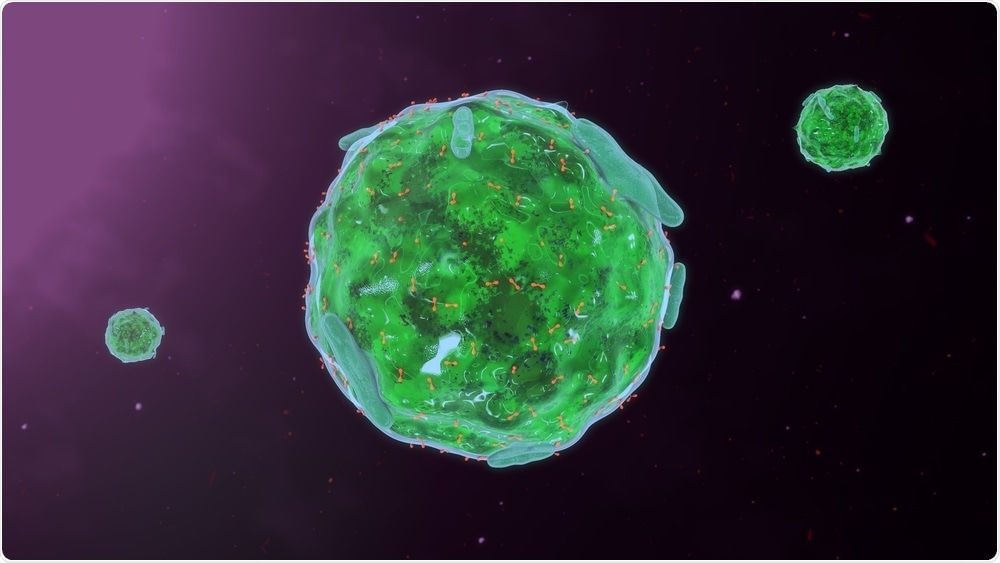When there is an excessive number or hyperactivation of immune cells, very high levels of proteins known as cytokines are released, resulting in a cytokine storm that causes severe and often irreversible tissue damage. This accounts for the crippling nature of many autoimmune disorders such as lupus.
Now, an international team of scientists has uncovered the structure of a regulatory complex that is involved in both metabolism and the release of cytokines by the immune system. It is hoped that the finding will be used to develop an effective treatment for lupus. The study was published in the journal Nature on May 29, 2019.
 Sciencepics | Shutterstock
Sciencepics | Shutterstock
The researchers were initially exploring a family of proteins called BRCA, which have been implicated in breast, ovarian, pancreatic and prostate cancers. BRCA proteins are tasked with the repair of damaged DNA in these cells. In order to achieve this, they interact with a complex of molecules called BRISC.
The researchers soon realized that this repair sequence shares similarities with the pathway of immune signaling regulation, and both involve some common players.
The important association between this complex and the immune system originally came about because my lab focuses on how BRCA1/2 function in DNA damage responses, and we realized that immune signaling entailed similar events that are governed by some of the same players involved in BRCA function.”
Roger Greenberg, Senior Author
Uncovering the structure of the BRISC complex
The enzyme serine hydroxymethyltransferase 2 (SHMT2) is an essential part of the DNA repair function of BRCA1, but also links to the BRISC complex to regulate the immune response.
SHMT2 is a mediator of reactions which involve the transfer of one-carbon units to build amino acids and nucleotides, which are essential to the synthesis of proteins and DNA respectively. However, SHMT2 must couple with a pyridoxine metabolite for activation.
In the current study, the BRISC complex blueprint was laid open by a sophisticated technique called cryo-electron microscopy (cryo-EM). In so doing, the researchers found that the SHMT2-BRISC interaction promotes cytokine release from immune cells.
The BRISC-SHMT2 complex is U-shaped, with a total of four components, each comprising a BRISC-enzyme subunit. Each subunit presents a different binding site, which projects from the side of the complex.
SHMT2 links the two arms of the U, preventing access to the active site of the enzyme and so inhibiting its activity. This restricts BRISC activation so that it acts only on inflammatory sites, preventing immune hyperactivation under normal circumstances.
Targeting BRISC to treat lupus
This discovery led to the realization that drugs binding to this complex could inhibit cytokine release and thus suppress autoimmune activity. Drugs which could induce mutations on these SHMT2-BRISC binding sites are therefore intriguing new developmental targets in the search for new treatments for autoimmune disease.
The researchers plan to look actively into designing compounds like small molecule inhibitors that inhibit BRISC activity, thus stilling the cytokine storm in lupus. The elucidation of the structure has been key in uncovering the points at which the BRISC complex is susceptible to intervention by drugs.
The team of scientists hailing from diverse disciplines like cancer biology, structural biology and medicinal chemistry, attribute their stellar success to their decade-long collaboration, sharing skills and knowledge. This enabled them to come up with startling findings that far exceed their individual capabilities.
We want to find a drug targeting BRISC to decrease interferon in order to help lupus patients. Knowing the vulnerabilities in the detailed structure of the BRISC-SHMT2 complex gives us new targets to work with.”
Roger Greenberg, Senior Author
Source:
Walden, M., et al. (2019). Metabolic control of BRISC–SHMT2 assembly regulates immune signalling. Nature. doi.org/10.1038/s41586-019-1232-1.